Last summer, I had the privilege of working as a professional trout guide. I went from fishing once or twice a month to guiding 4-6 days a week. I probably watched more eats, netted more fish, and spent more hours tying on flies in 3 months of guiding than I had in the previous 3 years. Yet, I rarely cast a fly rod. During my one off day each week, I’d often spend time on the water with a rod in my hand, but the vast majority of my “fishing” happened through a client.
This increase in time spent on the water, along with the change in perspective that comes with transitioning from angler to guide, has produced myriad changes in the way I fish. Ones that, in addition to likely being lifelong changes, have made me a better angler.
I Look at Casting Differently
Fishing with new anglers and those that struggle with their casting revealed just how vital proficient casting is to fly fishing success. An angler can triple or quadruple the amount of actual fishing time he or she gets if he can cast his fly to the correct spot on the first, second, or third try instead of the twelfth (or, not at all). Or if she can deliver her fly with one or two false casts instead of eight. It also became clear that there are times when perfect casting should yield to efficient casting. If, for instance, you’re nymphing a 10-foot long pool with a heavy rig, at the end of your drift you can just lob your rod from 9 o’clock to 3 o’clock and start again. No need for false casts or pretty loops, just lob it up there and get your flies back to fishing.
I Don’t Cast As Far
As a guide, it’s normal to have a client who has never touched a fly rod. In the first hour or so you need to teach them the basics—how to hold a rod, toss a basic cast, how to mend, set the hook, and fight a fish. When you eventually hit the river, you need to begin their on-the-water instruction by focusing on tactics that don’t require advanced casting skills. Most commonly, this is some form of high-stick nymphing with short casts—no need for hauling, shooting line, or tough mends. Yes, that means you’re limited to working in close. But guess what? Those anglers catch plenty of fish. When I was a novice fly fisherman, I fell under the YouTube spell of 60 foot casts and 40 foot mends. Yes, long distance fly fishing might look cool, but it’s tougher to hit your mark, much harder to get good drifts, and you’re far more likely to miss hook sets. These days, casts under 30 feet are my bread and butter.
I Care A Lot More About Which Fish I Catch Than How Many
Before I became a guide, I suffered from an affliction common among fly fisherman: I was numbers obsessed. There was no such thing as catching enough fish. But after netting hundreds upon hundreds of fish this summer, my appetite has been sated. I’m not going to stop fishing early—it will likely be years before I’m inclined to quit fishing at noon and take a nap—but these days I am much more interested in catching specific fish. That fish might be the biggest fish in the pool, or a fish I see feeding in a challenging hold, or maybe it’s a tiny trout out of a tiny piece of water that took me 4 hours to hike to. I am no longer starving for trout. I am still hungry, but like someone returning for seconds at Thanksgiving, I am only looking for my favorites.
I Worry Less About My Fly Selection But Am Also More Specific
Before my summer spent guiding, I was often, sometimes perpetually, worried that I was fishing the wrong fly. I believed that the perfect fly was out there, and was sure I wasn’t fishing it. But after guiding the same water day after day and targeting many of the same fish each week, I learned that specific flies aren’t as crucial as I thought they were. Size, shape, and color still drive my fly selection, but I am a lot less worried about having a flashback pheasant tail with gold ribbing and a brass bead than I am about having a slim, dark nymph in size 14.
While I’m no longer looking for that magic fly, I have more specific wishes from the patterns I use. I don’t want just any old hopper fly, I want one that has the right silhouette, back legs included, and has enough weight that it can really “smack” the water. But I also want another terrestrial that sinks a little more and has a shape that could be suggestive of a big ant, large caddis, or a smaller grasshopper. I want a very small, dark nymph with no flash, but I also want a really flashy one that will get some attention in cloudy water. I hardly know any of the names of the patterns in my fly box these days, but now that I have a better understanding of what I want those flies to do, I feel more confident when it comes time to pick one.
I Spend More Time Not Fishing
When I head to the water these days, I fish smarter. That means I spend less time fishing—or, at least, less time casting. I look for nymphs under rocks, I take note of what bugs are flying or hopping around as I walk to the river, I spend time looking for fish, and, if I find them, watch them feed. I spend more time reading water and strategize about how to get my flies to the right spot the first time.
I also spend more time enjoying myself. As a guide, I’ve encouraged my clients to appreciate the whole experience—to look closely at the fish we just caught; to notice the red spot on its adipose fin; to appreciate how dark this fish is or how green that one is; to take pauses to look around at the sun, the clouds, the birds and the flowers, and the beauty of creation ... And I now remind myself of these same things when I’m on my own. Before I spent time guiding, I was often blind to this beauty, too busy focusing on, you guessed it—numbers.
I guess it took a summer of helping other anglers catch fish to realize that there’s much more to fishing than catching fish.




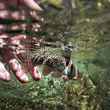


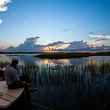
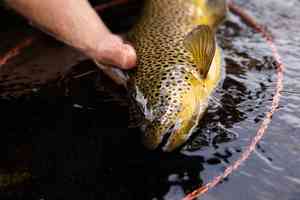

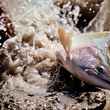




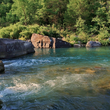
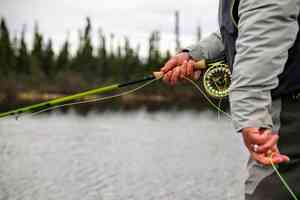

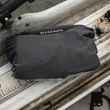
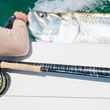
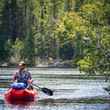



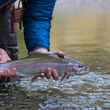

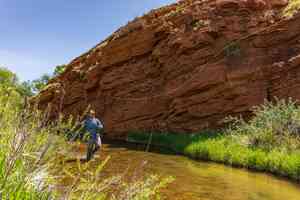
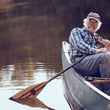

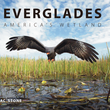

Comments
Todd Tanner replied on Permalink
Good piece, Jacob. Kudos.
Mac Hodell replied on Permalink
Thanks- these are great observations and great tips for all of us.
Mike Goldblatt replied on Permalink
After guiding for 4 seasons in my late 50's, I fell into a syndrome of not enjoying fishing on my own as much as fishing with a client. In other words the joy of getting someone else into a fish was way greater than just catching one myself.
Brian Kozminski replied on Permalink
Yes, yes & yep!! Loved it. and its so true. Clients get one, maybe a couple days a year to enjoy what we have for an office all year> they really need to TAKE IT ALL in. shorten those casts, make less false casts and hit those targets before we drift by...
Keep it up & don't lose the passion!! Tight Lines~>>
Bob White replied on Permalink
Youn learned all that in just a year?
Shit-fire, buddy! You've got it all figured out!
Let's go fishing!!
Adam replied on Permalink
Seriously...
Learn the craft beyond how to cast nymphs under a bobber for a year.
Mike Warren replied on Permalink
WOW — I couldn’t agree more!
After about ten years of guiding “part time” I’ve moved to full time over the last three and haven’t really missed those days on the water on my own. Sure, I like going exploring and finding new walk and wade streams to guide clients on. But, and no one tends to believe me, as Jacob so nicely inferred — I TRULY get more satisfaction out of seeing a beginner catch their first trout than me catching another one. Plus, I love being a “tour guide” of sorts showing off our beautiful valleys, farms and history of the Driftless region.
Great article and 1000% spot on.
Dave Kumlien replied on Permalink
Great article Jacob! I have been a fly fishing outfitter and guide in the Bozeman, MT area for almost 50 years. I enjoyed your article, and I agree with your observations and perspective. IMO, you are doing things right!
Mark R Worden replied on Permalink
As a part time guide this past season in S.W. Montana, I certainly can relate to your observations about how it changed you. Thank you for taking the time to share them. I have also become more aware of the whole experience of a day on the water and point out the wildlife and the beauty of Creation to my clients that I used to miss while focused on catching alone. From the sticks of the drift boat I can take it all in while entering into the joy of helping others catch a trout, sometime for the first time. What a privilege we have to share our knowledge, coach, and help others learn how to fly fish while having a wonderful day on the water.
Tom Wiley replied on Permalink
Excellent article. Though I am not a professional guide, I have taken many people fly fishing for their first time, including my two sons. I too get as much or more joy from watching others catch fish, Too many people think it's a competition and don't appreciate all the other things you mention that go with a day on the river. Thanks for a great article.
Deryn LaCombe replied on Permalink
Perfectly stated. Heading into my own 5th season guiding, each of your observations rings with truth. Guiding is a great way to cut through the clutter of our passion and get to the necessary fundamentals.
Ed H. replied on Permalink
Excellent piece. I can relate to so much of it.
Austen replied on Permalink
Good stuff. I think a takeaway is whatever you’re presenting, first cast in the right location will get you on more fish
Michael replied on Permalink
Thanks for the great article, hopefully it will help some folks short-circuit the fly game and find its juicy core quicker ; )
H moore replied on Permalink
I never got caught up in trout I harvest plenty of put and take and give them away as they are stocked in the winter in most places I fish and the water temp get to high for them to survive there are few places where I can fish for wild trout but considering my disabilities and how difficult they are to get to I usually avoid them. I have more fun fly fishing for panfish and targeting large bluegills on the nest in the spring. And much like the original poster I have a lot more fun if somebody else is with me. For the . Ultimate Experience take kid and get them hooked on fishing
Kim Tribe replied on Permalink
Coming up now 20 years in this game as a guide and coach, this article would sums it up really well.
Adam replied on Permalink
I don’t disagree with the observations but going from fishing once or twice a month to guiding doesn’t give me confidence that you experienced enough angling to provide true value to your clients.
Jim Murphy replied on Permalink
Great story...Great insight...I have been fly fishing now for over 20 years and finally have learned some of the lessons that took you only three. I've still got a long way to go and as I
enter my 80''s a short time to get their but old dogs can learn new tricks.
Thanks
Paul C replied on Permalink
Excellent article. The Back to basics approach is a great idea to help us enjoy the entire experience. Thanks for sharing this.
Pages